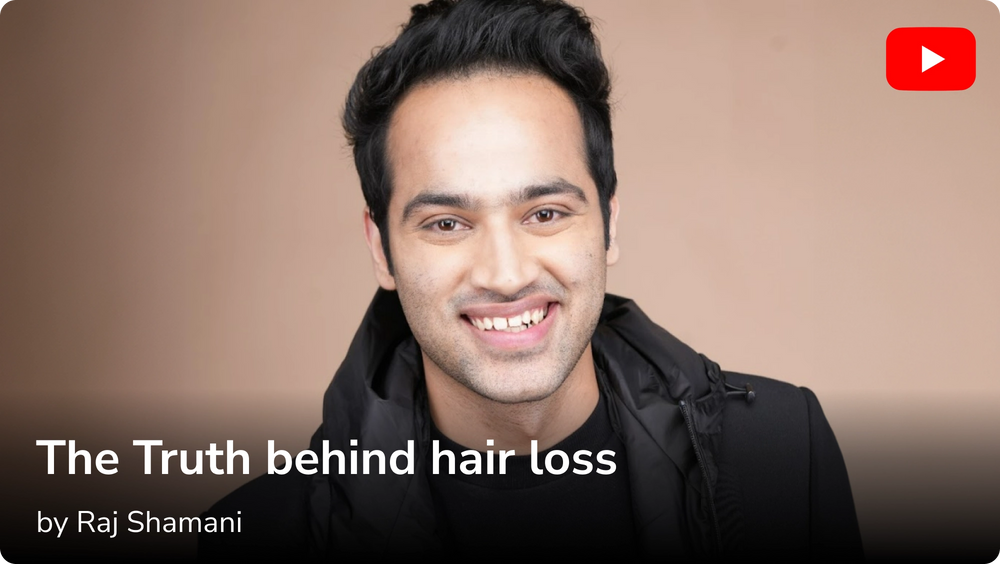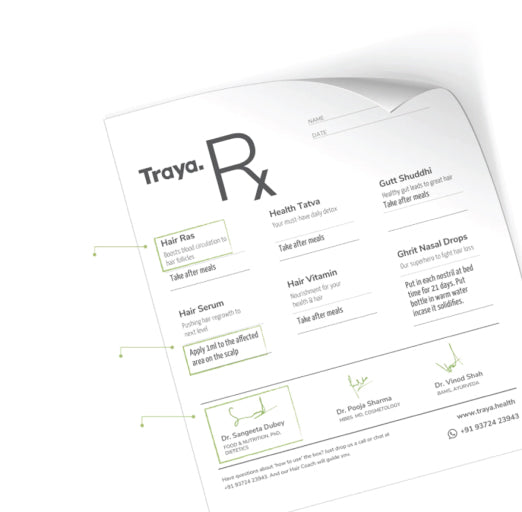Bringing a new life into the world is an incredible journey filled with joy, sleepless nights, and a whirlwind of changes. Amid all the cuddles and chaos, noticing more hair in your brush or pillow can be unexpectedly upsetting. If you’re feeling anxious or discouraged about losing your hair after childbirth, you’re not alone, and you’re not imagining it.
In this blog, we’ll explain postpartum hair loss, why it happens, how long it lasts, how you can manage it, and when it might be time to talk to a doctor. Think of this as your friendly guide to understanding and coping with the changes happening on your scalp so you can spend more time focusing on what truly matters: you and your little one.
What is Postpartum Hair Loss?
Postpartum hair loss, also known as telogen effluvium, is a completely normal and temporary condition that many women experience after giving birth. It typically begins around two to four months postpartum and may continue for several months.
-
Understanding the Hair Growth Cycle
To understand postpartum hair loss, it helps to know how the hair growth cycle works. Your hair goes through four phases:
-
Anagen (growth phase) – Hair actively grows (lasts 2–7 years).
-
Catagen (transition phase) – A short phase where growth slows down (about 10 days).
-
Telogen (resting phase) – Hair rests before shedding (around 3 months).
-
Exogen (shedding phase) – Hair falls out and is replaced by new growth.
During pregnancy, higher levels of estrogen prolong the growth phase, which means fewer hairs fall out. As a result, many women notice thicker, fuller hair.
-
What Changes After Childbirth?
After delivery, estrogen levels drop rapidly, causing a large number of hair follicles to shift into the telogen (resting) phase at the same time. This results in increased shedding, often seen in clumps or when brushing or washing hair.
-
Normal vs. Postpartum Shedding
It’s important to distinguish between everyday hair shedding and postpartum hair loss:
-
Normal shedding: Around 50–100 strands a day.
-
Postpartum shedding: Can be more, a lot more, with up to 300 strands per day falling out, especially around the hairline and temples.
Read more about this: https://pmc.ncbi.nlm.nih.gov/articles/PMC10846762/
Hair Fall After Pregnancy: Why It Happens
After childbirth, one of the biggest shifts your body experiences is hormonal,and it plays a starring role in postpartum hair loss.
-
Hormonal Changes
During pregnancy, estrogen levels soar. This keeps hair in the growth (anagen) phase longer, resulting in thicker, shinier locks. But once your baby is born, estrogen drops rapidly, and many hair follicles abruptly shift into the resting (telogen) phase, leading to a delayed mass shedding. This is a key reason behind sudden hair fall around 3 to 4 months postpartum.
-
Stress, Fatigue, and Nutritional Deficiencies
Sleepless nights, new routines, emotional highs and lows, all of it puts stress on your body. Physical and emotional stress can increase hair shedding. Add to that nutritional deficiencies, especially if you're not getting enough iron, zinc, biotin, vitamin D, or protein,and your hair may suffer even more.
-
Delayed Shedding Pattern
Unlike regular shedding, postpartum hair fall doesn’t start immediately. Most moms notice a peak around the 3- to 4-month mark, when it can feel like clumps are coming out all at once. This delayed response is tied to the hair cycle catching up with the hormone shift after childbirth.
Postpartum Shedding: What’s Normal?
While it might feel alarming, most postpartum hair loss is normal and temporary.
-
The Typical Timeline
Hair shedding usually begins around 2 to 3 months postpartum, peaks around 4 months, and slows down by 6 to 12 months. For most women, the cycle will return to its normal rhythm within a year.
-
How Much Hair Loss is “Normal”?
It’s common to lose up to 300 strands a day during postpartum shedding (compared to 50–100 strands normally). While that might seem like a lot, it’s just your body shedding hair that didn’t fall out during pregnancy.
-
Where You’ll Notice It Most
Many moms notice thinning around the temples, crown, or hairline, often referred to as the “postpartum fringe.” It may feel thinner when you put your hair up, but rest assured, regrowth is already underway (those tiny flyaway hairs are a good sign!).
Hair Loss & Breastfeeding: Is There a Connection?
This is one of the most common questions new moms ask:
"Is breastfeeding making my hair fall out?"
-
Breastfeeding is not the Cause!
Breastfeeding itself never causes hair loss. The hormonal shift that triggers postpartum shedding happens regardless of it.
-
Nutritional Demands During Breastfeeding
However, breastfeeding does increase the nutritional demands on your body. If you’re not eating a balanced diet which is rich in vitamins, minerals, and protein, your body will prioritize your baby’s needs over yours, potentially leading to nutrient deficiencies that can affect your hair health and delay recovery.
You need to focus on your diet as a young mother. These include:
There are certain foods that help counteract the declining hair health that PCOS patients often seem to undergo. These include:
-
Leafy green vegetables like spinach and kale which provide iron and folate, and support healthy hair follicles.
-
Berries and citrus fruits that are packed with vitamin C, which enhances iron absorption and even promotes collagen production.
-
Whole grain foods such as quinoa and oats help maintain a steady blood sugar level.
-
Avocados, nuts, and seeds supply the essential healthy fats and vitamin E, which help to nourish hair strands.
Fatty fish like salmon and sardines contain omega-3 fatty acids that help fight inflammation and boost gut health.
Taking a walk in sunlight is advised for your dose of Vitamin D.
Checkout our article about PCOS and hair fall: https://traya.health/blogs/symptoms/how-to-stop-hair-loss-due-to-pcos
-
Clearing Up the Myths
You might hear that breastfeeding is to blame for hair fall, but it’s not. Instead, if you are breastfeeding and not meeting your nutritional needs, your hair may take longer to bounce back. A well-balanced postpartum diet, hydration, and rest (as much as possible!) can make a big difference.
New Mom Hair Thinning vs. Other Conditions
-
When Hair Loss May Not Be Postpartum-Related
While postpartum hair shedding is a very normal part of recovery after childbirth, it is not the only cause of hair thinning in women. If your hair loss seems to be excessive, patchy, or even continues beyond the first year, it might be time to consider other reasons. Paying attention to these patterns, the duration, and associated symptoms can help differentiate the usual postpartum shedding from other health issues.
-
Underlying Conditions That Can Cause Hair Loss
There are several medical conditions that may lead to hair thinning or even excessive shedding, which is usually mistaken for postpartum hair loss. One of the most common ones include hypothyroidism. It is when the thyroid gland doesn’t produce enough hormones. This condition is fairly common in the postpartum period and causes symptoms like fatigue, weight gain, and hair thinning.
Another potential cause might be iron-deficiency and anemia, which can develop after childbirth. Especially, if there was significant blood loss. Without enough iron, the body might struggle to carry out oxygen to the scalp and hair follicles, which leads to the weakening and thinning of strands of hair.
Polycystic Ovary Syndrome (PCOS) is another condition that can be a major reason that is often overlooked. It causes hormonal imbalances in the body that can result in increased hair shedding, particularly in a male-pattern distribution (like thinning at the crown or temples)
Alopecia areata, which is an autoimmune condition, can cause sudden patchy hair loss, in the shape of coins and requires fast medical attention and treatment.
Read more about this: https://www.who.int/news-room/fact-sheets/detail/polycystic-ovary-syndrome
Checkout our article: https://traya.health/blogs/symptoms/how-to-stop-hair-loss-due-to-pcos
-
When to Consult an Expert?
If your hair loss continues beyond a 12 month postpartum period, occurs in patches, and/or is accompanied by other symptoms like chronic fatigue, irregular periods, or drastic weight changes, it is a good idea to check in with your doctor. The doctors might recommend a blood test to evaluate the thyroid function, stability in iron levels, or hormonal health, which helps rule out the more serious underlying causes.
How Long Does Postpartum Hair Loss Last?
-
Typical Timeline for Shedding and Regrowth
Most women begin to notice postpartum hair loss around 2 to 3 months after giving birth. This timeline is in sync with the hair cycle adjusting after the dramatic hormonal shifts of pregnancy. Shedding tends to peak around 4 months postpartum, when the hair that stayed throughout pregnancy enters the shedding (telogen) phase all at once.
-
When Can You Expect Recovery?
It is often seen that postpartum hair loss is temporary. By 6 to 9 months, many women see a significant reduction in shedding and notice baby hairs or regrowth. In some cases, especially, if there are nutritional deficiencies or underlying conditions, full regrowth might take up to 12 months. With time, a balanced diet, and gentle care, your hair will usually return back to its pre-pregnancy state.
What Can You Do to Manage It?
-
Nutritional Support for Hair Health
Your body’s nutrient levels are often depleted after pregnancy, especially if you are breastfeeding. Replenishing these stores and bringing stability is very important for both overall health and hair recovery. Food which helps do that are mentioned above.
-
Scalp Care and Gentle Hair Practices
Shampoo is a very important factor to consider while talking about hair. Switching over to a mild, sulfate-free shampoo and avoiding harsh chemicals or frequent heat styling is essential in restoring your hair's health. Let your hair air-dry whenever possible and limit the use of curling irons or straighteners. Avoid tight hairstyles like ponytails or buns that put stress on fragile strands. Doing scalp massages with nourishing oils like rosemary and coconut oil, will help blood circulation to the scalp. This will help the hair follicles to start the regrowth of hair, while also providing self-care.
-
Managing Stress for Better Hair Health
Stress plays a powerful role in hair loss. Postpartum life is stressful enough, so finding small ways to care for your mental and emotional well-being can make a difference. Try short mindfulness exercises, breathing techniques, or gentle yoga. Connecting with other new moms through support groups or even online forums can help you feel understood and less alone.
Postpartum Hair Loss Treatments:
-
Over-the-Counter Solutions
While giving time usually does the trick, some over the counter products support the recovery process. It includes biotin-rich serums, volumizing shampoos, or products specifically made for thinning hair. These won’t stop hair fall completely, but they do make hair appear voluminous and healthier during the regrowth process.
-
Considering Prescription Treatments
In more severe cases where shedding is still intense after a year, your doctor might suggest prescription treatments. However, many of them are unsuitable for postpartum or breastfeeding moms. Medications like Minoxidil (Rogaine), while effective for some types of hair loss, should only be used with medical guidance. It is usually not prescribed to women in the early postpartum period.
-
What to Avoid?
Avoid aggressive hair treatments like chemical straightening, bleaching, or excessive coloring, especially if your scalp feels sensitive. Give your hair time to recover before considering any harsh procedures or medications.
When Should You See a Doctor?
While postpartum shedding is usually harmless, there are times when medical evaluation is important. If you are noticing bald patches, shedding beyond a 12 month period, or a sudden, dramatic hair loss, it’s time to have a checkup. The doctors might suggest checking your thyroid hormones, iron levels, or evaluating your scalp for signs of inflammation or autoimmune conditions.
Checkout our page: Postpartum Hair loss Treatment



















